Assam Tribes of the North East

Assam Tribes of the North East
12 Nights / 13 Days
Day 1: Kolkata
Arrive in Calcutta (now called Kolkata). You are met at the airport and transferred to your hotel.
A mere village in the 17th century, Calcutta today is one of the largest cities in the world, one of the largest ports in the east and the main outlet for the produce of West Bengal and neighbouring states. The city was built around Fort William, with a huge Maidan surrounding it. The main building on the Maidan is the Victoria Memorial, a massive domed building of white marble which houses a collection of Queen Victoria memorabilia, as well as objects and documents related to the history of Bengal. In the park are statues of Queen Victoria, Lord Curzon and other figures of the British Raj. The Race Course, opened in 1819, is the largest in the east. In its central oval are the Calcutta Polo Club grounds where the game has been played since 1861.
Day 2: Kolkata
You will start today with a visit to North Kolkata visiting the Potters Village and stopping at College Street – at one time the intellectual heart of the city.
Day 3: Kolkata
You can start this morning with a visit to the colourful flower market. Walk in the Dalhousie square with a local expert.
Later you visit the temple to the goddess Kali, the patron goddess of the city. This evening you will have a specially prepared Bengali dinner – an “Aheli” around the corner from the hotel.
Day 4: Kolkata/Dibrugarh
Fly to Dibrugarh (6E 205 – 1230/1405hrs) and transfer to the hotel
Dibrugarh is the gateway to the “Hidden Land” of Eastern Arunachal Pradesh and Northern Myanmar. The Ahoms from Thailand came through Northern Myanmar to this area in the 13th century to establish their empire which thrived in the ancient land of Assam. It is the “Camellia” town of Upper Assam, an undisturbed haven, with its rich tea gardens resembling a lush green carpet. Experience and enjoy the richness of these tea gardens while staying at the Heritage Chang Bungalows. These are constructed on stilts and are situated in a serene atmosphere free from pollution.
When the British established their tea plantations in the mid-19th century they quickly built comfortable bungalows designed to make life as pleasant as possible in what was to them, a hostile and strange land. One of the main features of these buildings has given rise to their name – Chang Bungalows. Chang, in the local language, means “raised on stilts” and the design served a multitude of purposes – to keep the house cool by allowing the breeze to blow underneath and to keep both water and animals out!
Afternoon: take a tea walk at Mancotta Tea Estate.
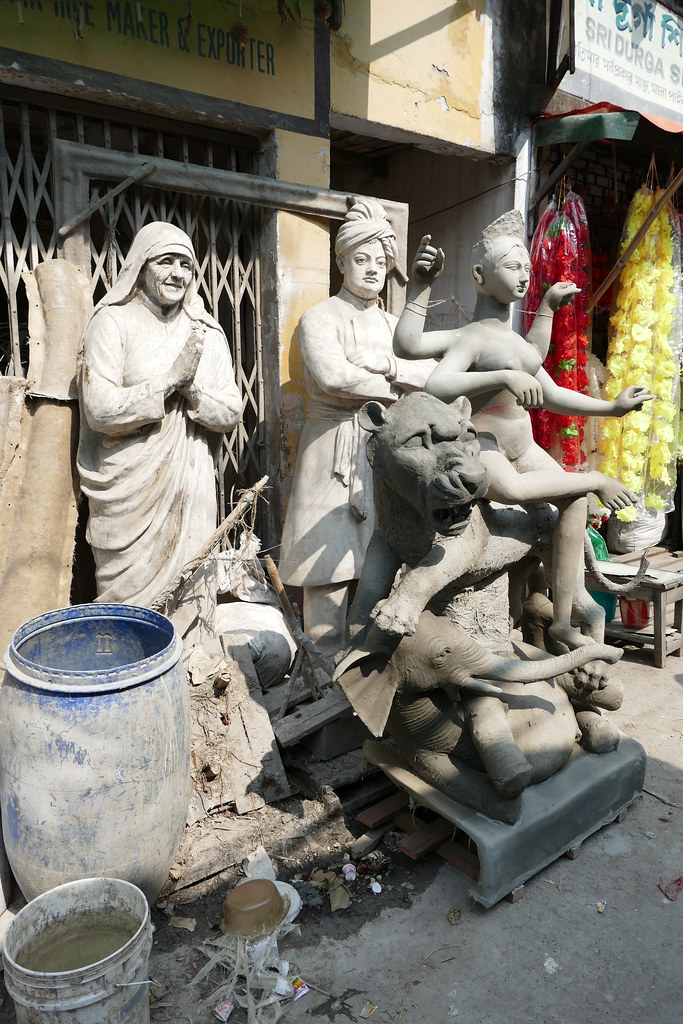
Day 5: Dibrugarh
Today, in the early morning we drive to Jokai Reserve Forest. It’s a small broadleaf forest minutes away from Dibrugarh. Numerous low altitude tropical species are present here like the small niltava, little-pied flycatcher, black-winged and large cuckoo-shrike, flocks of pompadour-green pigeon, jay-walking emerald dove, red-headed trogon, crimson sunbird, ruby-checked sunbird, scarlet-backed flowerpecker, and the black-breasted thrush to name a few. During spring, rare cuckoos (like the Asian-emerald cuckoo) and flycatchers can be seen here.
Post-breakfast spends the day in Dibrugarh visiting tea estates, tea gardens and factory where you can see the tea manufacturing process. You can try your hand at plucking tea leaves. Watch the tea being brought to the factory and see the whole process of manufacturing from withering to crushing, tearing and curling in the CTC machines to drying and packaging. You will also have a tea tasting session.
Note: Visiting a tea factory is subject to being operational on the day of the visit. There is no tea plucking between December till mid-March and hence the actual manufacturing process of tea cannot be demonstrated when one visits the factory during this period. The factory also remains closed on Monday’s of the week.
Day 6: Dibrugarh/Mon
You will drive today to Mon (approx 5-6hrs), home of the Konyak Tribe. This ancient tribe is the largest of the 16 tribal groups in Nagaland. Originally headhunters, the elders still wear brass necklaces of heads to illustrate how many heads they hunted successfully. During these two days, you will travel as far as the Indian border with Myanmar to the village of Longwa and meet the Angh – the hereditary chief. The Konyaks are the only tribe in Nagaland to have an Angh. This village straddles the India/Myanmar border and the Angh has jurisdiction on both sides.
Mon– situated at an altitude of 897 metres above sea level, is the home of the Konyak Nagas. It is interesting to see tattooed faces, wearing featured headgears and traditional war-dresses. They are known for excellent wood carving, handicraft and blacksmith.
Afternoon: visit Chui Village, inhabited by Konyak tribe and the local market. The village is situated about 8 km away and is known for preserving of much of its old-world charm. One can see the mansion belonging to the Angh which stores hundreds of stag skulls fetched from hunting periods. Cast your eyes over the plenty of houses which have been built in traditional Konyak style with palm-leaf roofing and the main pillars jutting out – the front side of these houses is decorated with horns of buffaloes.
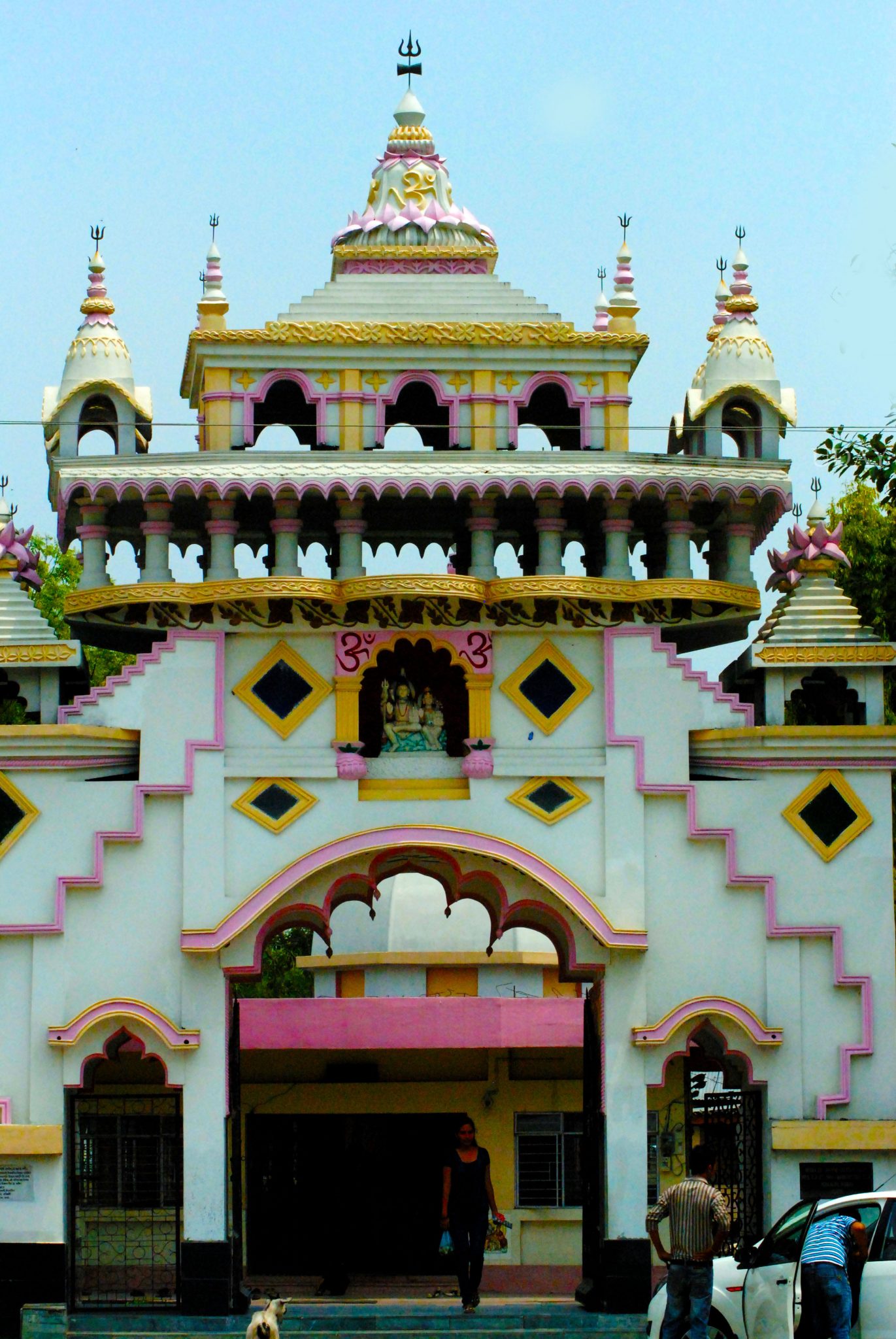
Day 5: Dibrugarh
Today, in the early morning we drive to Jokai Reserve Forest. It’s a small broadleaf forest minutes away from Dibrugarh. Numerous low altitude tropical species are present here like the small niltava, little-pied flycatcher, black-winged and large cuckoo-shrike, flocks of pompadour-green pigeon, jay-walking emerald dove, red-headed trogon, crimson sunbird, ruby-checked sunbird, scarlet-backed flowerpecker, and the black-breasted thrush to name a few. During spring, rare cuckoos (like the Asian-emerald cuckoo) and flycatchers can be seen here.
Post-breakfast spends the day in Dibrugarh visiting tea estates, tea gardens and factory where you can see the tea manufacturing process. You can try your hand at plucking tea leaves. Watch the tea being brought to the factory and see the whole process of manufacturing from withering to crushing, tearing and curling in the CTC machines to drying and packaging. You will also have a tea tasting session.
Note: Visiting a tea factory is subject to being operational on the day of the visit. There is no tea plucking between December till mid-March and hence the actual manufacturing process of tea cannot be demonstrated when one visits the factory during this period. The factory also remains closed on Monday’s of the week.
Day 6: Dibrugarh/Mon
You will drive today to Mon (approx 5-6hrs), home of the Konyak Tribe. This ancient tribe is the largest of the 16 tribal groups in Nagaland. Originally headhunters, the elders still wear brass necklaces of heads to illustrate how many heads they hunted successfully. During these two days, you will travel as far as the Indian border with Myanmar to the village of Longwa and meet the Angh – the hereditary chief. The Konyaks are the only tribe in Nagaland to have an Angh. This village straddles the India/Myanmar border and the Angh has jurisdiction on both sides.
Mon– situated at an altitude of 897 metres above sea level, is the home of the Konyak Nagas. It is interesting to see tattooed faces, wearing featured headgears and traditional war-dresses. They are known for excellent wood carving, handicraft and blacksmith.
Afternoon: visit Chui Village, inhabited by Konyak tribe and the local market. The village is situated about 8 km away and is known for preserving of much of its old-world charm. One can see the mansion belonging to the Angh which stores hundreds of stag skulls fetched from hunting periods. Cast your eyes over the plenty of houses which have been built in traditional Konyak style with palm-leaf roofing and the main pillars jutting out – the front side of these houses is decorated with horns of buffaloes.
Day 7: Mon
Today explore the tribal villages of Konyak Tribe (Longwa, Shangnyu & Langmeang). The photographic opportunities are exceptional in these villages.
Longwa is among the biggest villages in the district. As the village straddles the international boundary line: one half of the Angh’s house falls within the Indian Territory and the other half lies in Myanmar. However, the whole village is controlled by the Angh (King) and the village council chairman.
Shangnyu village, ruled by the Chief Angh, is a prominent village in the Mon district. There is a wonderful wooden monument measuring 8 ft in height and 12 ft in breadth – believed to be constructed by heavenly angels. Human beings and other creatures are carved on this monument. Memorial stones are also found in front of the Angh’s Palace. History records that good, friendly relationships existed between the Shangnyu and the Ahom Kings of Assam. Shangnyu Angh used to collect taxes from all the villages under his domain – extending from Sibsagar in Assam to the Wanchos in Arunachal. After returning from Shangnyu village visit Mon Village, here also you will find tattooed Konyaks.
If time permits you may also visit, Langmeang village, famous for the headhunting trophies. One can see the Angh’s mansion and other houses constructed in the true Konyak tradition with palm leaves roofing and the main pillars jutting out.
There’s a lot to see in Mon, and the days can be very busy travelling, you may not have time to cover all tribal villages, but your guide will plan your two days in the best manner depending upon the local conditions and will try to take you to maximum sites possible.
Day 8: Mon/Sivasagar/Jorhat
In the morning drive to Jorhat (140 kms/ 05 hrs) via Sivasagar, the old capital of the Ahoms who ruled Assam for 600 years before the arrival of the British into these parts. There are several old monuments built by the Ahoms: the most significant being the huge man-made tank ‘Sibsagar’ from which the town got its name. There is a two-storied amphitheatre built by the rulers to enjoy games and sports and dance and music. The Siva Temple, built by the Ahoms, situated here is believed to be the tallest of all existing Hindu temples. The ruins of the Ahom palaces and monuments dot the landscape around this historical town. Centuries before the arrival of the British, this part of the world was controlled by several tribal chieftains.
In the town of Sivasagar, one can still see the remaining well-preserved relics. The largest and the oldest amphitheatre of Asia (Rang Ghar) is also another remarkable landmark in the history of Sivasagar. The Tai-Ahom Museum of Sivsagar contains some of the relics of the Ahom period: swords, clothes, manuscripts and sundry artefacts.
Jorhat was the last capital of the Ahom Kingdom and home to many historical monuments of Assamese culture. In the north of Jorhat, the Brahmaputra River forms the second-largest riverine island of the world, Majuli, which spreads over 924.6 square kilometres. The cultural diversities which prevailed in Jorhat nearly a century ago has inspired the people to participate in cultural activities through the decades and as a result, Jorhat has been able to produce many creative writers, musician, actors, historians and journalists, terming Jorhat “The Cultural Capital of Assam”.
Day 9: Jorhat/Majuli/Jorhat
Early morning proceed towards Neemati Ghat. From here we will take a ferry across the mighty river Brahmaputra to one of the biggest river islands in the world and also the heart of the Assamese culture – Majuli. We will be visiting a ‘Satra’ and interact with the monks and other locals there.
Afternoon: visit a tribal village of the Mishing – the Mishing tribes. Later, board an evening ferry back to Neamati Ghat.
Situated in the heart of Assam – Majuli is considered to be the largest inhabited river island in the world. Majuli is the seat of Vaishnava culture in Assam. The great 15th-century Assamese reformer and saint, Shankardeva had come down here and set up ‘satras’ or Vaishnavite monasteries to make the people motivated towards culture and religion. (Please note that you will be expected to remove your shoes when entering the Vaishnavite monasteries). The Mishing people are a fishing community inhabiting the outer edge of the island. They are known for their skill not only in fishing but navigating the rapid shifting course of the mighty Brahmaputra.
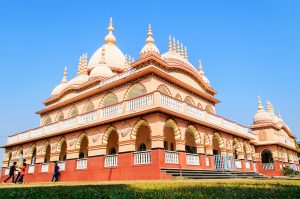
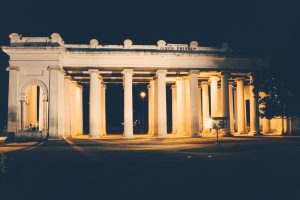
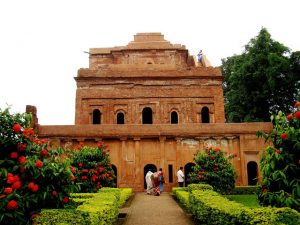
Day 10: Jorhat/ Kaziranga
Early morning: visit the Gibbon Sanctuary. Post breakfast: drive to Kaziranga (approx 04 hrs).
On arrival check-in at the hotel in Kaziranga
Kaziranga National Park has tall, dense grasslands interspersed with tropical, wet evergreen forests and semi-evergreen forests, interconnecting streams and numerous small lakes against a backdrop of the majestic Eastern Himalayas. Kaziranga is a world heritage site and is one of the most beautiful & diverse forest ecosystems in India. Two-thirds of the total population of the one-horned rhinos is in this park. It also has the highest-density tiger population in any protected area in the world.
Later in the afternoon, you will visit a Weavers Workshop in a village nearby – an initiative by the local village women to encourage self-employment. Here you will see the traditional process of making Assam silk weaving. You will end your day with a vegetarian simple meal with the villagers.
Note: The park remains open from 1st Nov to 30th April only.
Day 11: Kaziranga
Early morning: go for an elephant safari followed by jeep safari post breakfast. Afternoon: go for another jeep safari.
Note: Elephant safaris for foreign nationals are held only on Kaziranga Range, Kohora (Central Range)
Allocation of elephant riding seats and timings are regulated by the forest department, Kaziranga National Park, Government of Assam. The tickets for the same are issued only on the previous evening of the ride after 7:30 PM.
Day 12: Kaziranga
Full day jungle drive with morning and afternoon jeep safaris.
Day 13: Kaziranga / Guwahati
After breakfast drive to Jorhat airport (approx 04 hrs) and fly to Kolkata. On arrival connect with your onward flight.
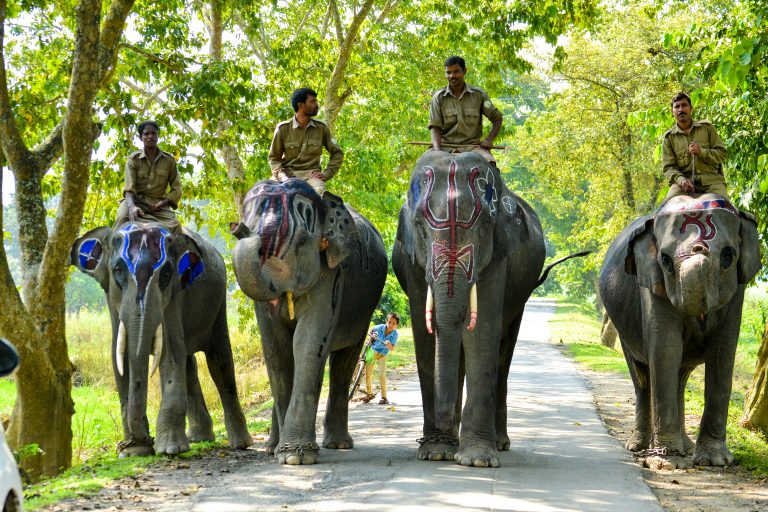
All of our featured itineraries can be customised bespoke to your preferences. Contact us to find out more, or explore our fantastic array of other Culture & History itineraries here.
![Tailor-made Holidays [logo]](https://www.myworldinstyle.com/wp-content/themes/esyntaxis/images/my-world-in-style-logo.svg)